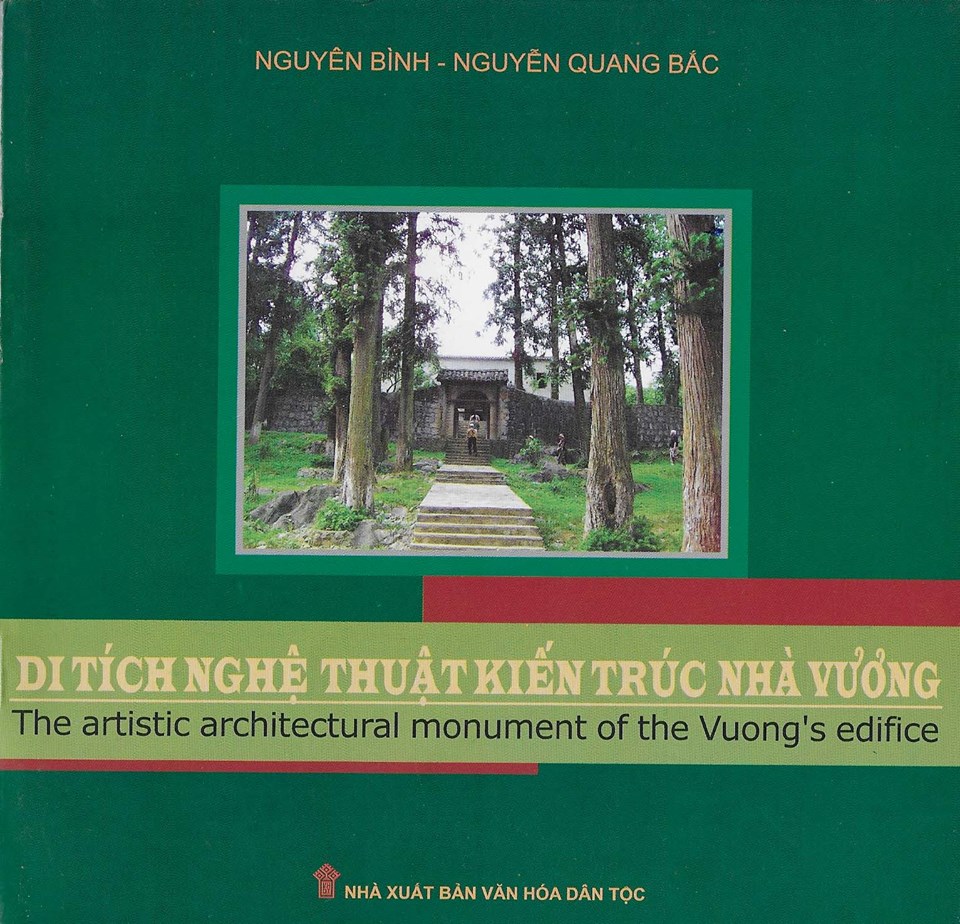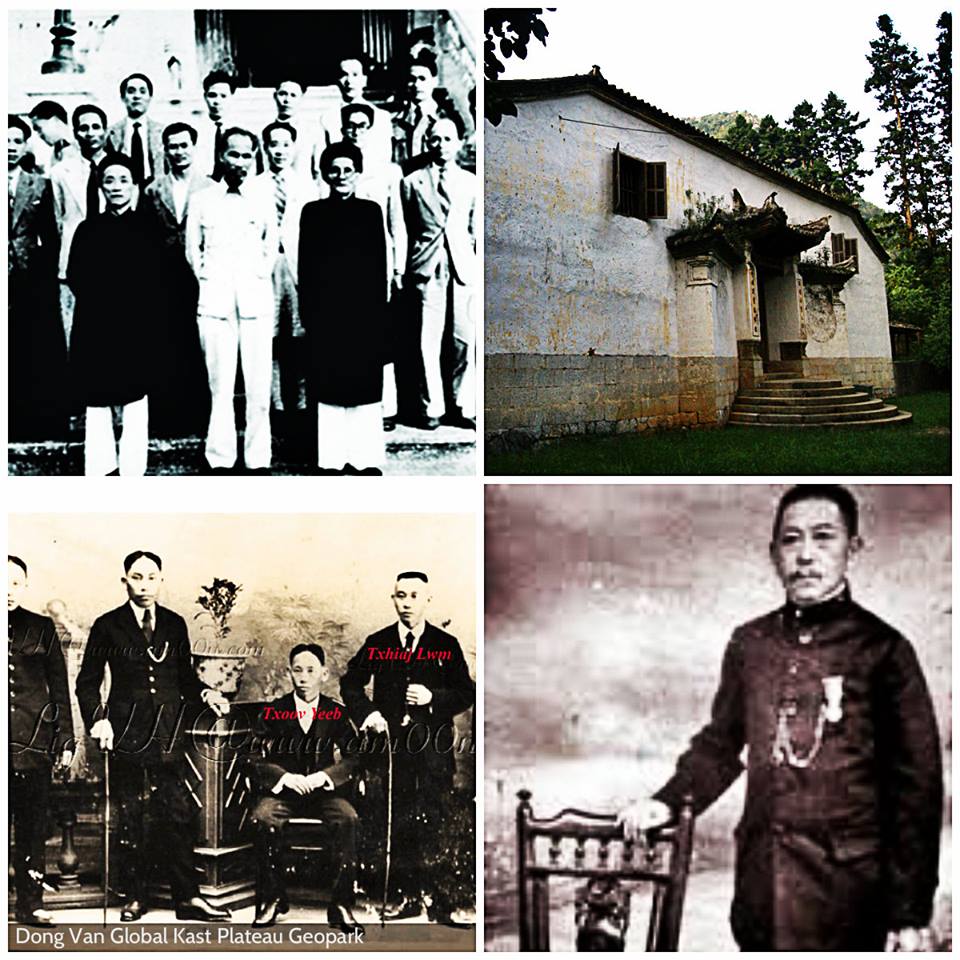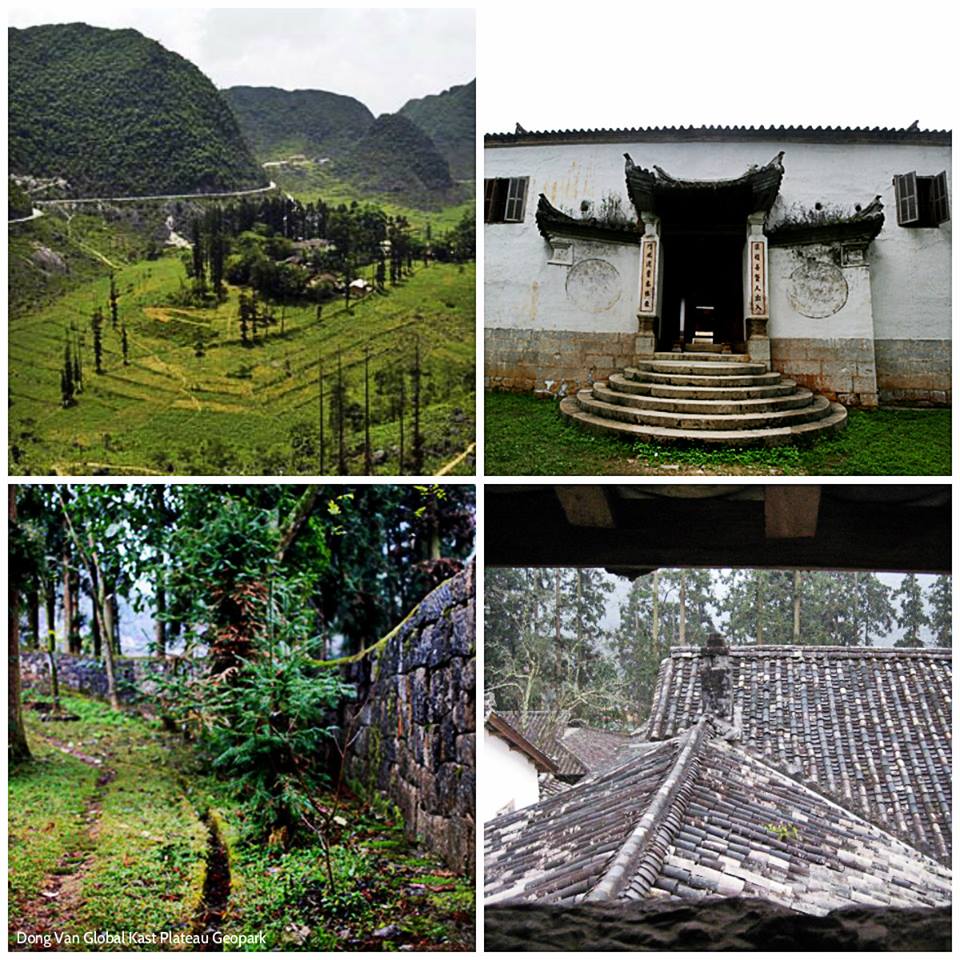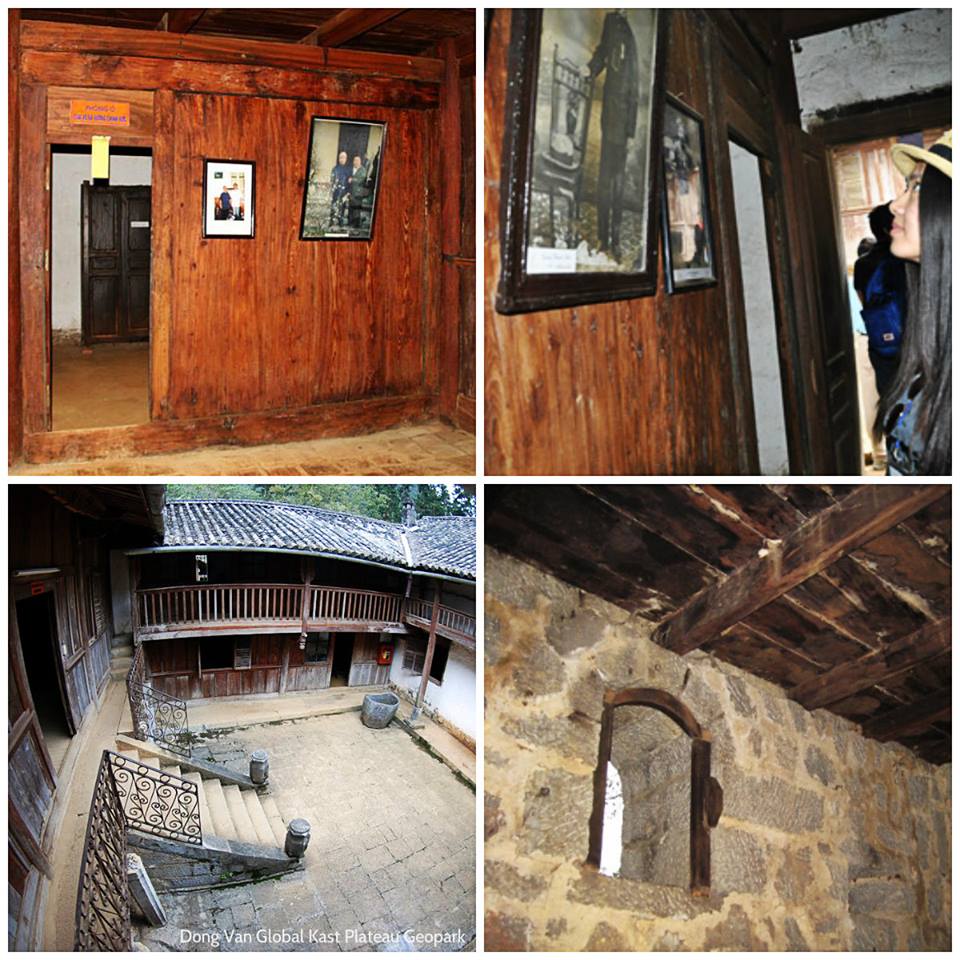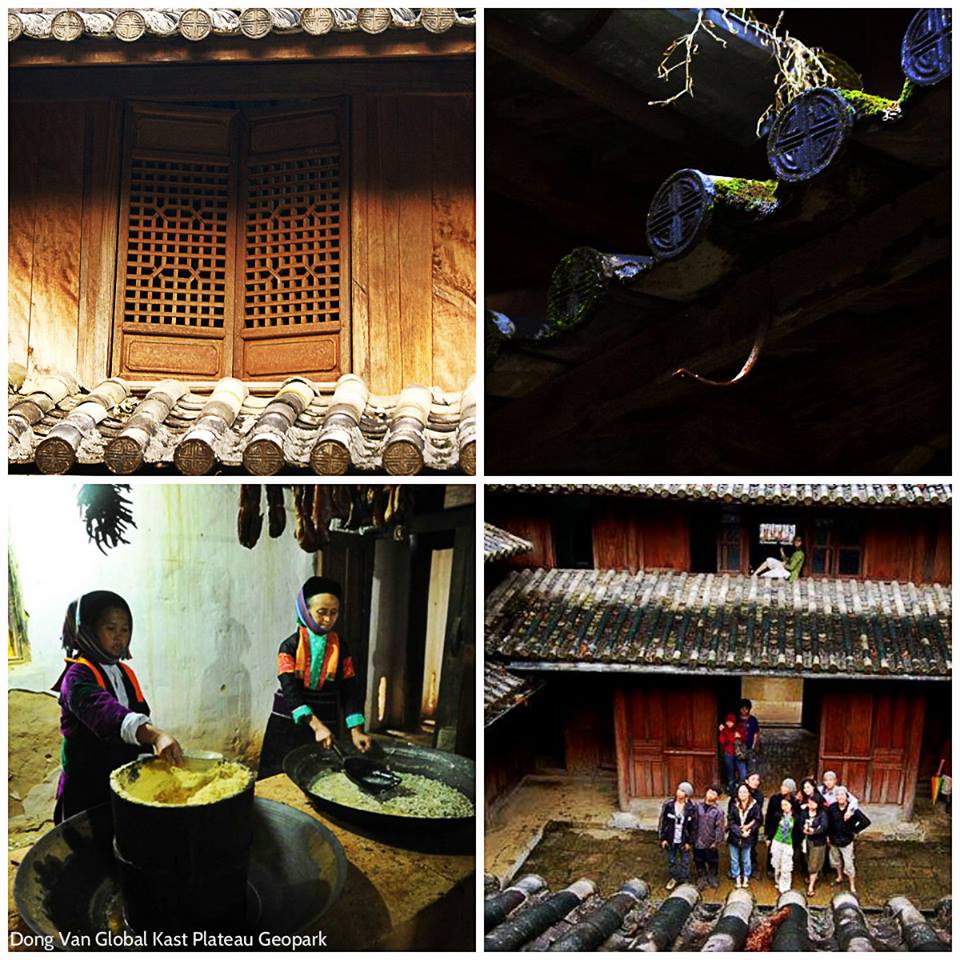From "Series of the artistic architectural monument of Vuong’s edifice - Dong Van Global Kast Plateau Geopark".
Published in 2010 by the Cultural And National Publishing House.
Part 1: Preface
The artistic architectural monument of Vuong’s edifice is in Sa phin A hamlet, Sa Phin commune, 16 km from Dong Van District, and 130 km from Ha Giang City with its estimated altitude is about 1,330 m
The artistic architectural monument of Vuong’s edifice is the unique work of art with the harmonious combination of Chinese, Hmong and French architectural styles.
Every year, there are approximately ten-thousands people come to visit the Vuong’s edifice. Some people have visited several times but it seems to them that they still have not found out all of ít beauties, impressiveness and artistic features of this cultural work.
Ministry of Culture and Information has certified the Vuong’s edifice as a national artistic architectural monument since 1993
The artistic architectural monument of Vuong’s edifice will make you impressive with its sizableness, antique and the combination of multicultural architecture as a flower on the wildly impressive mountains.
Part 2: History of the Vuong’s edifice
Vuong Chinh Duc , born in 1865 in Dong Van – Ha Giang, was a talent and prestige man in that region. He was promoted as government clerk by Khai Dinh king in 1923 together with honor board: “Border government is bestowed” (This border government is worthy of bestowing). Government clerk represents for district chiefs of huge area or Dong Van district and five communes of Quan Ba district total.
In the same year, Vuong Chinh Duc decided to build this edifice. It would be not only the place of Vuong’s family and the working place but also a safe fort.
The Vuong’s edifice is on the tortoise-shape plateau, the back side on the north direction, and its main view directs to the south, It was said that before building this edifice, Vuong Chinh Duc had invited famous Chinese geomancers to choose the best position
The geomancers had looked for the whole area of Dong van district and realized Sa Phin valley. After investigating, the geomancers said that: “This is the excellent region, there is tortoise-shell shape area in the valley, building the work on the shell of the tortoise deities, achievements will perpetuate forever. There are two glutinous rice cake-shape mountains in the front, that will support living requirements for generation. The back ranges of mountains may play the role of defense walls for the edifice. Building the edifice on that area, it will stable for thousands of year. Without any hesitation, Vuong Chinh Duc immediately decided to built the edifice on that excellent area.
Vuong Chinh Duc had invited skilled worker from Guangzhou and Sichuan provinces (People’s republic of china) come to build the edifice. The best local workers also are invited to work together with the Chinese ones.
With help of thousands people and builder, it took 8 years and spend 150,000 silver coins to build this edifice
Part 3: The end: Some information about the Vuong’s Family
Vuong Chinh Duc’s father was normal people only. And Vuong Chinh Duc was a date for head of territory Hoang Tu Binh. Because of his skill and spirit, he was highly esteemed by many people. When Hoang Tu Binh became old, Vuong Chinh Duc was promoted to position of head of territory.
According to Mr Vuong Quynh Son sayings, the fourth generation of Vuong Chinh Duc, middle names of Vuong Chinh Duc’s family in Sa Phin valley are revolved in seven generations are: Chinh, Chi, Dinh, Quynh, Duy, Van, Lap, after Lap, it will come back to Chinh.
Chinh is the first generation with Vuong Chinh Duc. Chi is second generation with Vuong Chi Tinh, Vuong Chi Sinh, Vuong Chi Chu,..
Dinh is the third generation with Vuong Dinh Phu, Vuong Dinh Quy and Vuong Dinh Tho.
Quynh is the fourth generation with Vuong Quynh Son
Vuong Chinh Duc got married with three wives. With his first wife, he got two sons is Vuong Chi Tinh and Vuong Chi Sinh and three daughters. The second wife died when she was still young. The third wife, he got two sons and a daughter.
Along the Vietnamese Border, at that time, there are some overlords. In the north-west is Deo Van Long seigneur, in the northest is Hoang A Tuong and in Ha Giang – Bao Lac is Vuong Chinh Duc…
Among Vuong Chinh Duc’s Sons, Vuong Chi Sinh is appreciated, when grand Vuong Chinh Duc became old, he cedes to Vuong Chi Sinh. After Grand Vuong Chinh Duc death, His tomb was built on the halfway up the Lau Chua Tung hill, about 3 km from edifice. There is a 40 metres squared stone yard in front of the tomb and there is chessboard scarved on stone slate.
Vuong Chi Sinh is the second son of grand Vuong Chinh Duc. He got married with four wives in total but he only got four sons and two daughter. Among Vuong Chi Sinh’s wife there are madam Truong My Thuan. Truong My Thuan’s father was cantonese, people’s Republic of China. He was the French interpreter for Sun Yat-sen (Ton Dat Tien). Thuan’s mother, lived in Ha Dong, Vietnam.
At the end of 1945, Vuong Chi Sinh and his wife went to visits Ho Chi Minh president. President HCM invited Vuong Chi Sinh to live in Hanoi then they struck up a friendship with each other. Vuong Chi sinh then was rename as Vuong Chi Thanh, with his given name is the same as that of uncle Ho use before come back Vietnam-Indochina.
In the general election of national assemble on January 1946, Vuong Chi Sinh was elected to the national assemble in term I (1946 – 1960) and re-elected in term II. He was a chairperson of Dong Van People’s committee. In 1959, Vuong Chi Sinh moved to Hanoi to work as a specialist central committee for nationalities. Vuong Chi Sinh died in 1962 in Hanoi.

